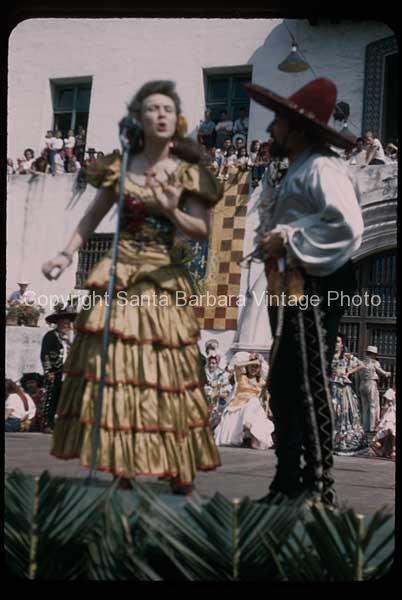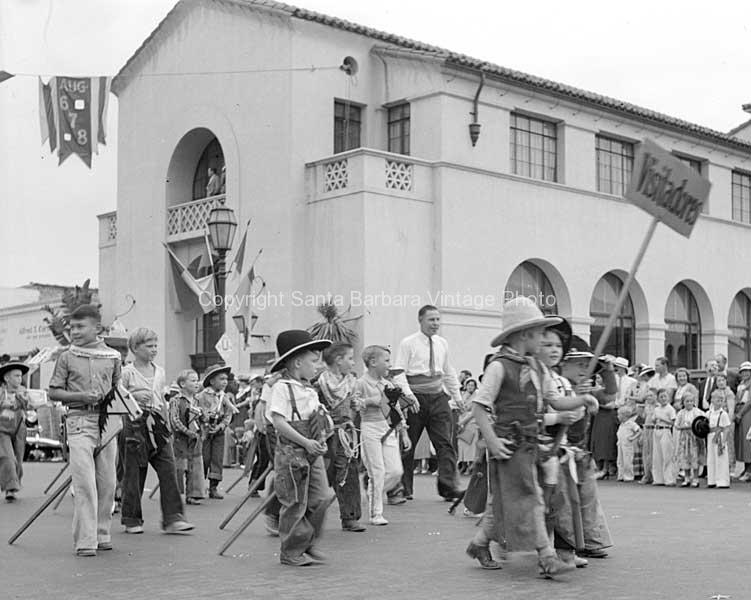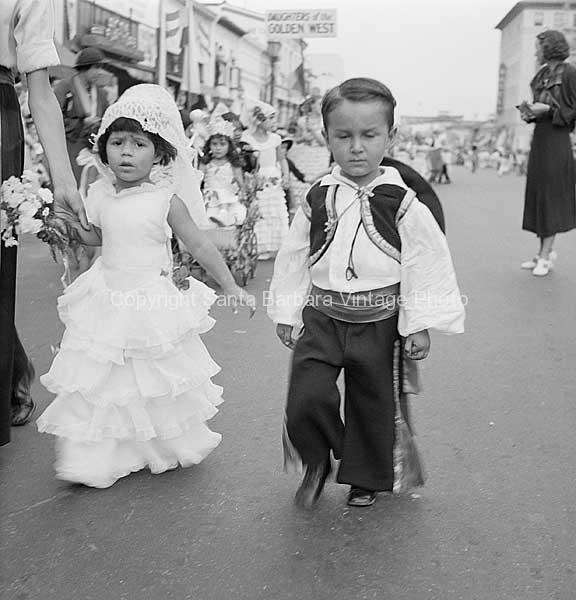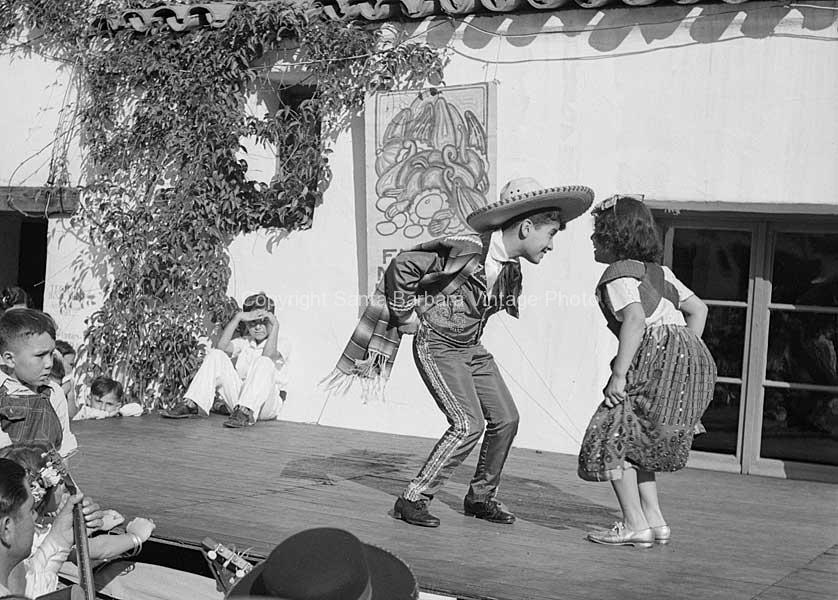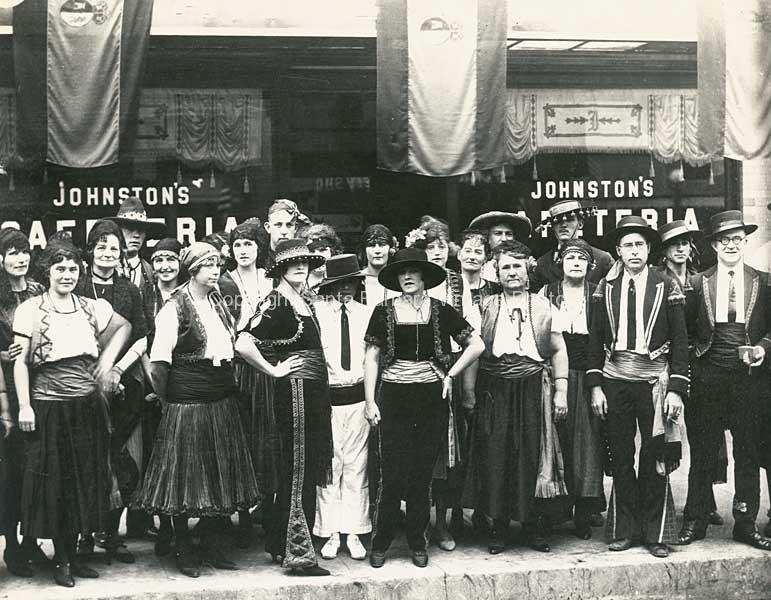Santa Barbara Fiesta
The History of Santa Barbara’s Annual Fiesta Celebration
The era that is highlighted during our community’s “Old Spanish Days” Fiesta is commonly called “the Rancho Period.” This period lasted roughly 40 years, taking place from around 1824 to 1864, when Santa Barbara was under Mexican rule and American rule … but not Spanish.
This Rancho Period was a distinct culture. It was neither Spanish nor Mexican, and in fact the people here did not identify as either Mexican or Spanish, but insisted on being called Californios. Furthermore, they had a whole cultural body of work — songs and dances — unique to just California.
Most fascinating was that there were no towns, no stores, no hospitals, and no banks at this time. The people — considered to be among the most outstanding horsemen in history — lived on enormous ranchos of some 4,000 to 40,000 acres, isolated by miles of chaparral. They raised cattle for its tallow and hides utilizing only a barter system, trading with merchant ships from Boston and Europe.
There were neither hotels nor inns, so visitors passing through had to depend on the hospitality of these Californios who graciously opened up their homes, saying, “¡Mi casa es su casa!” — “Welcome, friend, my house is yours!” These hosts then would invite neighboring ranches for a party to celebrate this unexpected arrival of a stranger. Thus visitors were a welcomed presence — they provided an excuse to hold a community party and they brought news of the outside world to isolated Californios.
During this period, Mexico threw out the Spaniards, and closed down the missions. So those Chumash who had lived at the missions for years (and in many cases, for generations) came to work on these ranchos as cooks, weavers, domestics, carpenters, farmers, and — something rarely recognized — the Chumash worked as our earliest vaqueros!
California became a state in 1850 and soon became flooded with Yankees and even Europeans. The heretofore quiet landscape was now filled with new people and foreign languages and commotion. Adobes were exchanged for modern wooden houses, metal carriages replaced the wooden oxen carreta, the renowned De la Guerra home found itself in the midst of a bustling little American town of shops, banks, and hotels. The gentle strum of a guitar could no longer be heard over Professor McCoy’s dashing dance band.
While it was an exciting new era, longtime residents of Santa Barbara would reminisce about the earlier, quiet time before the arrival of the Americans dominating the scene en masse. They remembered how “everyone got along” back then — the Spanish, American, Indian, Mexican, and European — and that everybody took care of one another. And everyone spoke Spanish. They recalled the communal gatherings of the ranchos for a fiesta to share music, dance, food, and news. They would wistfully think back on these “old Spanish days” as halcyon days where people were unbelievably generous to one another and hospitable to strangers.
By the latter part of the 19th century, old-timers referred to the “old Spanish days” to differentiate from the modern English-speaking era. That is the origin of this term.
In 1924, the creation of a new community festival sought to recall this rancho era of songs, dances, and legendary Californian hospitality. So when it was named “Old Spanish Days” almost 100 years ago, everyone knew what this phrase meant. Unfortunately, we seemed to have lost that community knowledge, and must reeducate ourselves to this history.
The theme for 2017’s Fiesta, “Unity through Community,” incorporates two things. It commemorates that singular culture 180 years ago in which communities took care of one another and welcomed visitors. And it highlights our Old Spanish Days today which involves 3,300 volunteers, including flower girls, musicians, 400 dancers from 27 different dance studios, 55 nonprofits, hundreds of horsemen and women, marching bands, businesses, and service clubs. Our Fiesta includes the patronage of the Santa Ynez Band of Chumash Indians and the participation of and presentations by the Coastal Band of Chumash Nation. This is what is meant by “unity through community.”
Olvera Street’s Fiesta Patrias in Los Angeles celebrates Mexican culture; the Malibu Chumash Pow-wow and Santa Ynez Chumash Day address Chumash culture. Santa Barbara’s fiesta is remarkable among California towns to focus on this extraordinary rancho period — our “old Spanish Days.”
Erin Graffy, Historian
Contact Us
![]()














